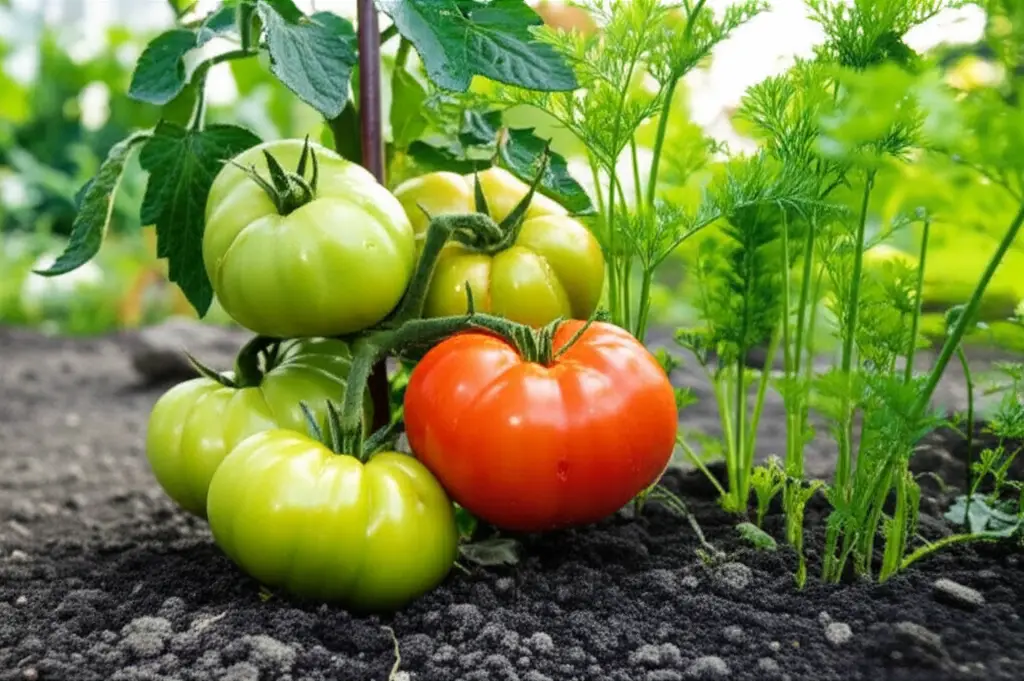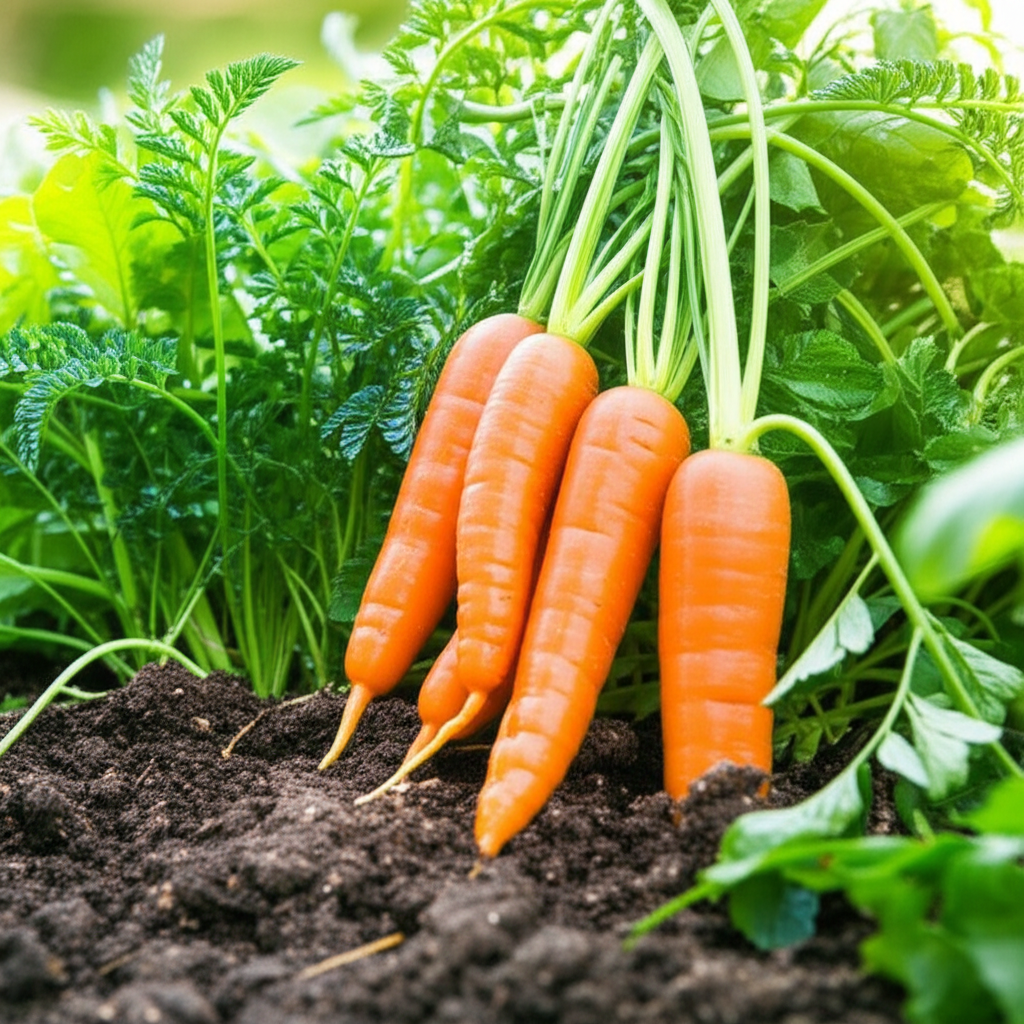Learn the secrets of companion planting to boost your tomato and carrot harvests. This guide explores the benefits, techniques, and best practices of growing tomatoes and carrots together, maximizing your garden space and improving the health of your plants.

Companion planting is a time-tested gardening technique where specific plants are grown together for mutual benefit. This post delves into the synergistic relationship between tomatoes and carrots, outlining how they can enhance each other’s growth and protect against pests.
JUMP TO TOPIC
The Benefits of Companion Planting Tomatoes and Carrots
Companion planting offers a multitude of advantages for your garden. By strategically pairing plants like tomatoes and carrots, you can create a healthier and more productive ecosystem. Here’s a closer look at the key benefits:
Pest Control: Tomatoes emit solanine, a natural insecticide that deters carrot root flies, a common pest that can decimate carrot crops. Carrots, in turn, release chemicals that repel tomato hornworms and other tomato pests. (Source: The Old Farmer’s Almanac)
Improved Soil Health: Carrots, with their deep taproots, help break up and aerate the soil, improving drainage and allowing tomato roots to access nutrients more easily. Tomatoes, being heavy feeders, benefit from this improved soil structure.
Enhanced Flavor: Some gardeners believe that companion planting can enhance the flavor of both crops, although scientific evidence is still limited in this area.
Space Optimization: Intercropping tomatoes and carrots allows you to maximize your garden space, growing more in less area.
Reduced Weed Growth: The dense foliage of tomato plants can help suppress weed growth around carrots, minimizing competition for resources.
Best Practices for Companion Planting Tomatoes & Carrots
Successfully companion planting tomatoes and carrots requires understanding their specific needs and growth habits. Here are some crucial tips to consider:
Timing is Everything
Start Seeds Indoors: Start tomato seeds indoors 6-8 weeks before the last expected frost. Carrots can be sown directly in the garden a few weeks before the last frost.
Staggered Planting: Consider staggering the planting of carrots around your tomatoes. Plant a row of carrots, then a tomato plant, then another row of carrots. This ensures that the carrots don’t compete directly with the tomatoes for space and nutrients.
Spacing and Placement
Sunlight Requirements: Both tomatoes and carrots require full sun (at least 6-8 hours of direct sunlight per day). Make sure your chosen location provides adequate sunlight for both.
Adequate Spacing: Provide sufficient spacing between plants to allow for proper air circulation and prevent overcrowding. Space tomato plants 2-3 feet apart and thin carrots to 2-3 inches apart.
Carrot Placement: Plant carrots around the base of the tomato plants, but not too close to the stem. Aim for a distance of at least 6 inches from the tomato stem.
Soil Preparation and Care
Well-Drained Soil: Both tomatoes and carrots thrive in well-drained soil rich in organic matter. Amend your soil with compost or aged manure before planting.
Consistent Watering: Water deeply and regularly, especially during dry periods. Tomatoes require consistent moisture, while carrots prefer evenly moist soil.
Mulching: Apply a layer of mulch around the base of your plants to help retain moisture, suppress weeds, and regulate soil temperature. (Source: University of Minnesota Extension)
Other Beneficial Companion Plants for Tomatoes and Carrots
While tomatoes and carrots are excellent companions for each other, other plants can further enhance your garden’s ecosystem:
Basil: Repels insects like aphids, whiteflies, and tomato hornworms. Also enhances tomato flavor.
Marigolds: Deter nematodes and other soil-borne pests.
Onions and Garlic: Repel many common garden pests.
Nasturtiums: Trap aphids, attracting them away from your tomatoes and carrots.
Troubleshooting Common Problems
Even with careful planning, you might encounter some challenges. Here are a few common problems and solutions:
Overcrowding: Thin out carrot seedlings to ensure proper spacing and prevent competition.
Pest Infestations: Monitor regularly for pests and take appropriate action, such as introducing beneficial insects or using organic pesticides.
Disease: Ensure good air circulation and proper watering to prevent fungal diseases.
FAQs: Companion Planting Tomatoes & Carrots
Q: Can I plant carrots and tomatoes in the same pot?
A: While possible, it’s not ideal. Tomatoes require a larger pot than carrots, and competition for resources can hinder growth.
Q: When is the best time to plant carrots with tomatoes?
A: Sow carrot seeds a few weeks before the last expected frost, and transplant tomato seedlings after the danger of frost has passed.
Q: Do carrots improve tomato flavor?
A: Some gardeners believe this to be true, although scientific evidence is still limited.
Q: What other vegetables are good companions for tomatoes?
A: Basil, onions, garlic, marigolds, and nasturtiums are all beneficial companion plants for tomatoes.
Conclusion
Companion planting tomatoes and carrots can significantly benefit your garden, leading to healthier plants, larger yields, and reduced pest problems. By following the tips outlined in this guide, you can create a thriving garden ecosystem that maximizes space and enhances the flavor and health of your crops. Remember to choose the right varieties, prepare the soil properly, provide adequate spacing, and monitor for pests and diseases. Embrace the natural synergy of companion planting, and enjoy a bountiful harvest!

